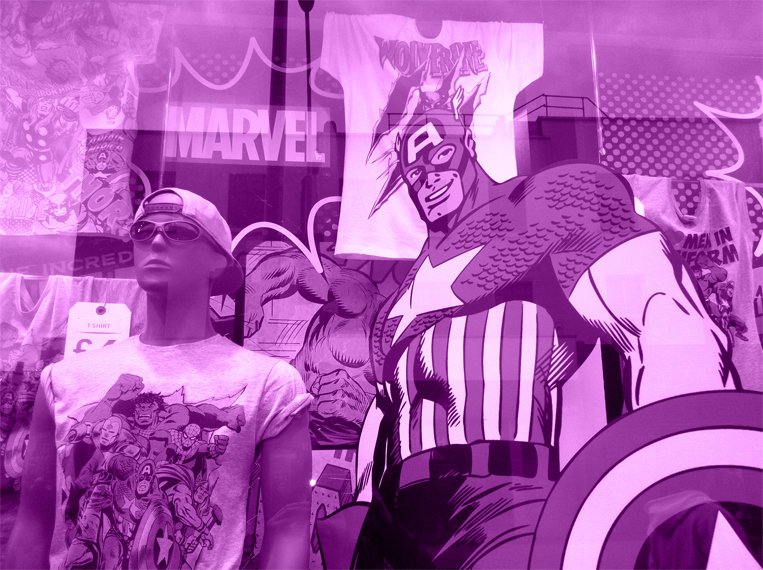Social media has fundamentally changed the face of the world that we live in, and we need to adapt to the new situation. In terms of business, social media has transformed how organisations have to interact with customers to be able to survive and thrive. Customers are now able to share their thoughts and opinions about businesses with hundreds of friends, all with one quick Facebook status update, or a 140 character tweet. At the same time, consumers have a lot more choice about what they decide to look at or not, online.
This has changed the way that businesses need to interact with their customers. As Cameron Uganec (2013) puts it, writing for Hootsuite: “We have a connected consumer revolution. The consumer is now in control of what they view, what they share and how they view. So there has been a major shift in terms of the relationship between consumers and marketers”. The change in relationship between consumers and businesses means that marketers have to operate differently.
According to Cameron Uganec, this means that marketers have to move away from push marketing and towards pull marketing. Customers on social media networks are not interested in being told messages from marketing departments. Rather they want to read compelling and interesting information that engages them and makes them want to interact with the organisation. So that is what marketers need to do, and that’s where storytelling comes in. Industry pundits agree on this.
Simon Mainwaring, an award winning branding consultant, social media specialist and blogger writes that: “For a truly effective social media campaign, a brand needs to embrace the principles of marketing which involves brand definition and consistent storytelling.” Mainwaring explains that social media is not a “broadcast channel”. Instead it is a channel for two way dialogue, and that this should be achieved through emotional storytelling.
How to construct a great story IntelligenthqStories draw customers in and as Uganec describes, they make people better able to understand the world that we live in. When people communicate with one another they are always telling stories. We describe people and places. This keeps others engaged with what we have to say. The very same principle is true of marketing through social media. If businesses want to keep customers engaged then they too need to tell stories that draw customers in and interest them. Uganec says that this is because ultimately communication is between people talking with one another rather than businesses connecting with consumers. This is a fundamental mind set change that some businesses have yet to make. Uganec explains that good marketers have always understood the importance of excellent storytelling and why customers are switched on by it.
Great stories have a structure that they need to follow for success. In particular, there needs to be a beginning, a middle and an end, and there has to be a hero. There needs to be a setting and a plot. Good stories always involve conflict of some sort. In illustrating his points, Uganec provides some excellent examples of great storytelling in marketing. He hails Red Bull as having been amazingly successful in this area. In fact Red Bull has done so outstandingly well with its storytelling that media giant NBC is purchasing the rights to the stories that it has produced.
They post engaging and compelling stories on social media that people are drawn into and want to keep watching. People talk about these stories with one another both online and offline, and this is superb marketing for Red Bull. In terms of explaining the concept of conflict, Uganec uses the example of Apple’s 1984 advertisement. Watching the advertisement is quite simply not like watching an advertisement. It is like watching an interesting story, and the customer wants to keep watching to find out what will happen.
The ad can be watched here:
The ad is sinister and somewhat disturbing but it does an excellent job of making the customer stand up and pay attention. And it is still being talked about today, indicating its phenomenal success. The bottom line is that storytelling is critical to success in social media and developing a brand reputation for excellence in this area will win companies customers. It’s time to get creative and have some fun. Your customers and your bottom line will thank you for it.
Guide to Social Media and Storytelling Part 2
Guide to Social Media and Storytelling Part 3

Paula Newton is a business writer, editor and management consultant with extensive experience writing and consulting for both start-ups and long established companies. She has ten years management and leadership experience gained at BSkyB in London and Viva Travel Guides in Quito, Ecuador, giving her a depth of insight into innovation in international business. With an MBA from the University of Hull and many years of experience running her own business consultancy, Paula’s background allows her to connect with a diverse range of clients, including cutting edge technology and web-based start-ups but also multinationals in need of assistance. Paula has played a defining role in shaping organizational strategy for a wide range of different organizations, including for-profit, NGOs and charities. Paula has also served on the Board of Directors for the South American Explorers Club in Quito, Ecuador.












